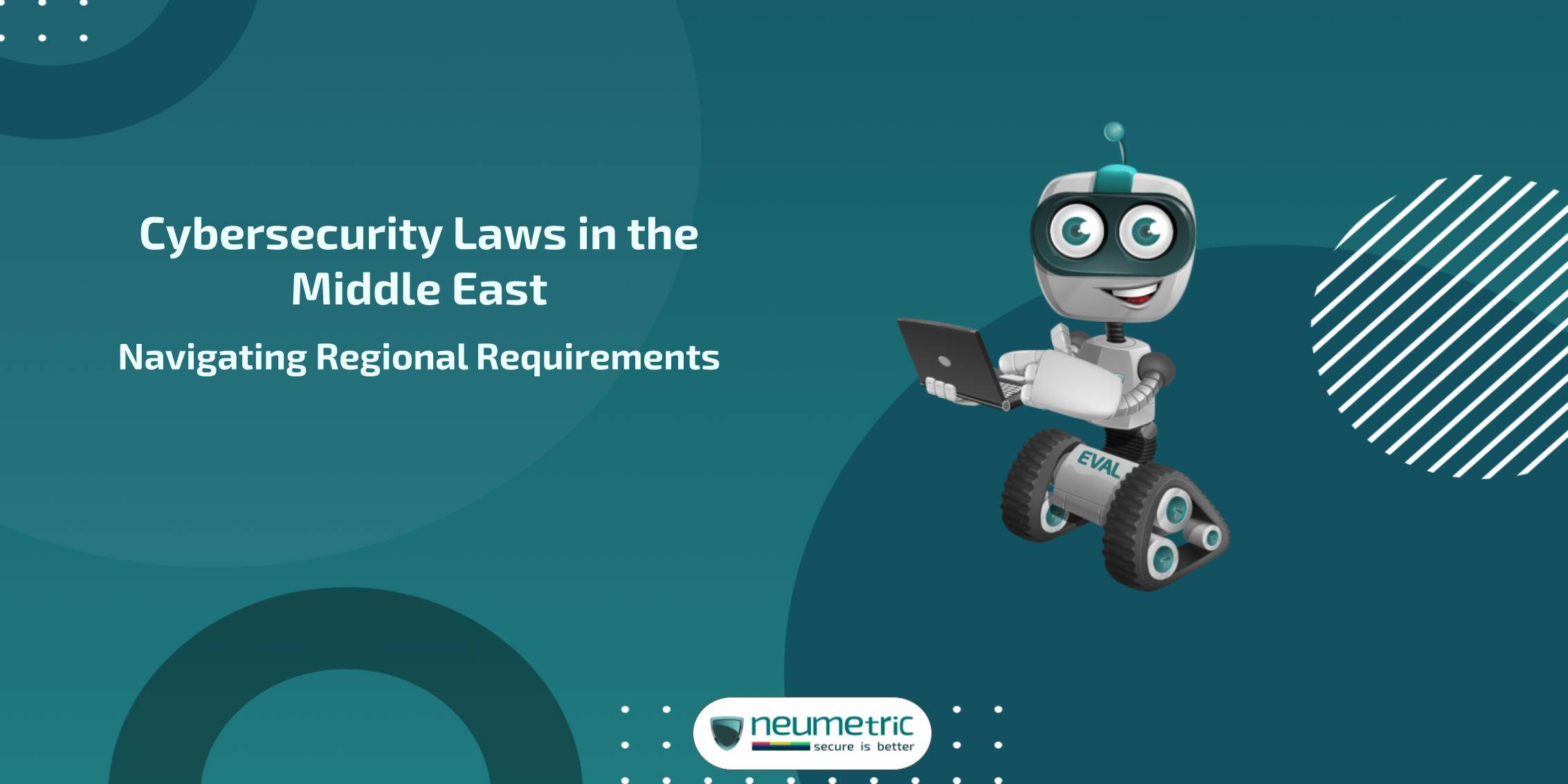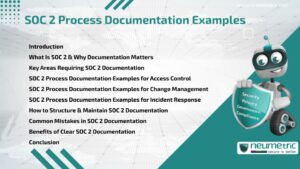Table of Contents
ToggleIntroduction
The Middle East, characterised by its rapid digitisation, is not immune to the challenges that accompany the digital age. The interconnectedness of businesses, governments & individuals has opened up new frontiers for cyber threats. From sophisticated phishing schemes to targeted ransomware attacks, the region faces a diverse array of cybersecurity challenges.
In this dynamic environment, comprehending the intricate web of cybersecurity laws is paramount. Navigating the digital landscape without a clear understanding of regional regulations can expose businesses & individuals to unforeseen risks. Compliance with cybersecurity laws is not merely a legal obligation; it’s a strategic imperative to safeguard data, privacy & the overall stability of operations.
This Journal aims to shed light on the nuances of cybersecurity laws in the Middle East, offering a practical guide for businesses & individuals navigating the intricacies of regional regulations. From the overview of the threat landscape to the specific compliance requirements of key countries, we’ll explore the essentials without delving into overwhelming details. Join us on this journey to unravel the essentials of cybersecurity laws in the Middle East.
Cybersecurity Challenges in the Middle East
In the realm of digital interconnectedness, the Middle East grapples with a rapidly evolving cybersecurity landscape, presenting both opportunities & risks.
Emerging Threat Landscape
- Overview of Cyber Threats: The digital frontier in the Middle East faces a spectrum of cyber threats ranging from phishing attacks targeting individuals to sophisticated cyber-espionage campaigns impacting national security. Understanding this landscape is crucial for devising effective defence strategies.
- Recent Incidents in the Region: Recent cyber incidents in the Middle East underscore the urgency of addressing cybersecurity challenges. These incidents serve as cautionary tales, emphasising the need for proactive measures to counter the growing sophistication of cyber threats.
Impact on Businesses & Individuals
The repercussions of the evolving cybersecurity landscape extend beyond the digital realm, affecting businesses & individuals in tangible ways.
- Economic Consequences: Cyberattacks can have profound economic implications, disrupting business operations, causing financial losses & eroding investor confidence. The economic fallout of such incidents necessitates a strategic & coordinated approach to cybersecurity.
- Data Breaches & Privacy Concerns: Data breaches not only jeopardise sensitive information but also give rise to privacy concerns. Individuals & businesses alike face the challenge of safeguarding personal data, balancing the convenience of digital transactions with the imperative to protect privacy in an interconnected world.
- Regional Variances in Cybersecurity Laws: As the Middle East navigates the complexities of cybersecurity, it becomes evident that the legal landscape is not uniform across the region. Understanding the nuances of each country’s approach is crucial for businesses & individuals operating in this dynamic environment.
Overview of Countries in the Middle East
To comprehend the regional variances in cybersecurity laws, it’s essential to consider the unique socio-economic & political contexts of each country in the Middle East. From the UAE’s rapid technological advancements to Saudi Arabia’s strategic cybersecurity framework, each nation contributes to the broader mosaic of regional regulations.
Comparative Analysis of Cybersecurity Regulations
- UAE Cybersecurity Laws:
- Key Provisions: The UAE’s cybersecurity laws encompass a range of provisions, addressing issues such as data protection, critical infrastructure security & incident reporting. Understanding these key provisions is crucial for businesses operating within the country.
- Compliance Requirements: Complying with UAE cybersecurity laws involves adherence to specific requirements, including data localization, incident response plans & regular cybersecurity audits. Businesses must navigate these requirements to ensure legal compliance.
- Saudi Arabia Cybersecurity Framework:
- Regulatory Landscape: Saudi Arabia has established a comprehensive cybersecurity framework, outlining regulations to safeguard critical infrastructure & sensitive data. An exploration of this regulatory landscape provides insights into the country’s commitment to cybersecurity.
- Enforcement Mechanisms: Understanding the enforcement mechanisms within Saudi Arabia’s cybersecurity framework is essential for businesses seeking to align their operations with the country’s legal requirements.
- Qatar, Oman, Bahrain & Kuwait:
- Notable Differences: While these nations share certain cybersecurity principles, there are notable differences in their approach to regulations. These differences may include varying emphases on specific aspects of cybersecurity or unique compliance requirements.
- Harmonisation Efforts: Despite differences, there have been regional initiatives to harmonise cybersecurity regulations. Exploring these harmonisation efforts offers a glimpse into the collaborative endeavours aimed at creating a more cohesive regional cybersecurity landscape.
Key Components of Cybersecurity Laws
In the complex realm of cybersecurity laws, specific components stand out as crucial pillars, shaping the legal landscape & guiding businesses in the Middle East.
Data Protection & Privacy
As the digital age relies increasingly on data, protecting personal information has become paramount. Cybersecurity laws in the Middle East address this imperative through:
- Personal Data Regulations: These regulations outline the parameters for handling personal data, specifying the rights of individuals & the obligations of businesses to safeguard this sensitive information.
- Consent & Data Processing: Within the framework of cybersecurity laws, the nuances of obtaining consent for data processing are carefully defined. Understanding these requirements is essential for organisations dealing with personal data.
Critical Infrastructure Protection
Safeguarding critical infrastructure is a cornerstone of cybersecurity laws, ensuring the resilience of key sectors against cyber threats. This involves:
- Identifying Critical Sectors: Cybersecurity laws delineate sectors deemed critical to national security & economy. Understanding which industries fall under this category is vital for compliance.
- Regulatory Measures for Critical Infrastructure: Specific regulatory measures are in place to fortify critical infrastructure against cyber threats. Compliance with these measures is imperative for entities operating in these vital sectors.
Incident Response & Reporting
Given the inevitability of cyber incidents, laws in the Middle East provide guidelines for efficient incident response & reporting. This includes:
- Reporting Obligations: Clear stipulations on when & how to report cybersecurity incidents are defined in these laws. Businesses must be aware of their reporting obligations to mitigate the impact of incidents.
- Timelines for Incident Response: Cybersecurity laws set timelines for responding to incidents promptly. Adhering to these timelines is crucial for minimising the fallout of a cyber event & demonstrating compliance with regulations.
Compliance Challenges & Best Practices
Navigating the intricacies of cybersecurity laws in the Middle East comes with its set of challenges. Recognising & addressing these challenges is pivotal for ensuring robust compliance:
Common Compliance Challenges
- Cross-border Data Transfer: The challenge of securely transferring data across borders is a recurring concern. Understanding the legal nuances surrounding cross-border data transfer is essential for businesses engaged in international operations.
- Ambiguities in Regulatory Language: Ambiguities in regulatory language can pose hurdles to interpretation & implementation. Businesses must grapple with these ambiguities to ensure their cybersecurity practices align with the intended legal requirements.
Best Practices for Ensuring Compliance
To overcome compliance challenges & foster a resilient cybersecurity posture, businesses can adopt the following best practices:
- Cybersecurity Audits: Regular cybersecurity audits serve as proactive measures to assess compliance levels & identify potential vulnerabilities. Audits provide a holistic view of the organisation’s security posture.
- Ongoing Employee Training: Building a culture of cybersecurity awareness through continuous employee training is instrumental. Educating personnel about evolving threats & preventive measures enhances the overall security resilience of an organisation.
- Engaging with Regulatory Authorities: Establishing open lines of communication with regulatory authorities fosters a collaborative approach. Proactive engagement enables businesses to seek clarification on regulatory requirements & ensures a smoother compliance journey.
Conclusion
In conclusion, unravelling the landscape of cybersecurity laws in the Middle East is not merely a legal necessity but a strategic imperative for businesses & individuals alike. As we reflect on the key takeaways, it becomes evident that adapting to the evolving cybersecurity landscape is not a one-time effort but an ongoing commitment.
Businesses in the Middle East are urged to take a proactive stance, implementing the best practices outlined earlier to fortify their defences. In a world where cyber threats continue to evolve, the call to action is clear – a continuous adaptation to the dynamic cybersecurity environment. By embracing these principles, businesses can not only comply with regional regulations but also fortify their digital resilience in the face of emerging threats. Stay secure, stay vigilant.
Frequently Asked Questions [FAQ]
Why is understanding the cybersecurity landscape in the Middle East crucial for businesses & individuals?
In the ever-connected digital space of the Middle East, comprehending the cybersecurity landscape isn’t just a legal obligation – it’s a strategic imperative. Understanding the nuances of regional regulations ensures that businesses & individuals can navigate the digital terrain securely, protecting data, privacy & overall operational stability.
How do cybersecurity laws in the Middle East address the challenges posed by emerging cyber threats?
Cyber threats in the Middle East are diverse & ever-evolving. The cybersecurity laws take a proactive stance, outlining provisions that address a spectrum of threats – from phishing attacks to sophisticated cyber-espionage campaigns. By staying ahead of the curve, these regulations aim to fortify the region’s resilience against emerging cyber challenges.
What are the key components of cybersecurity laws in the Middle East & how do they impact businesses?
The key components revolve around data protection, critical infrastructure & incident response. Businesses must navigate personal data regulations, ensure the security of critical sectors & adhere to incident reporting timelines. Compliance is not just about following rules but safeguarding economic interests, minimising data breaches & ensuring a prompt response to cyber incidents.





